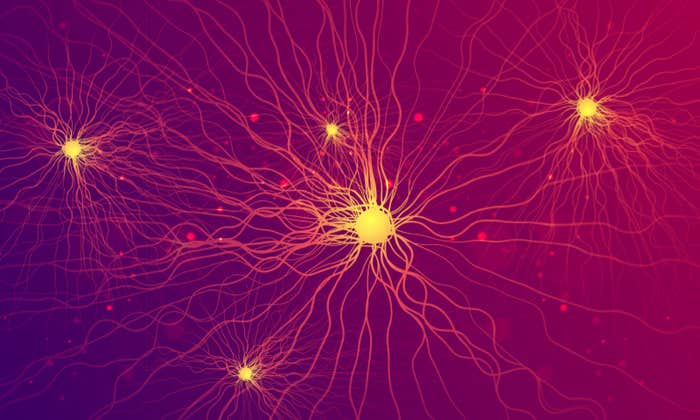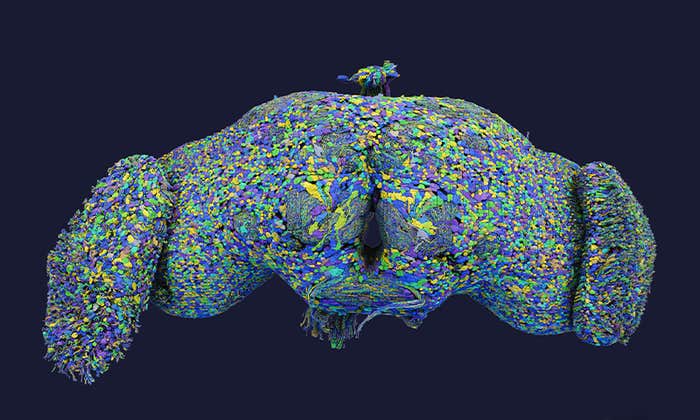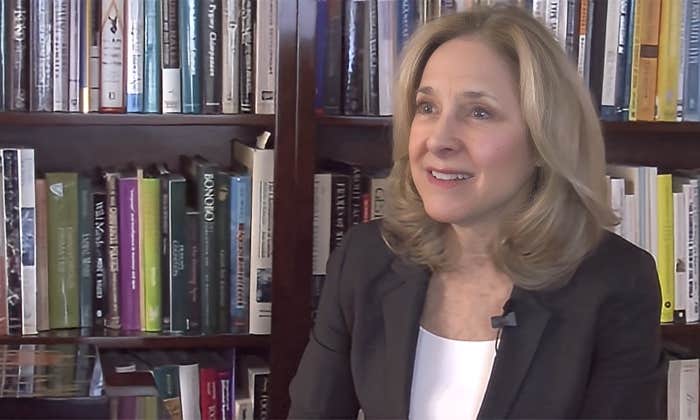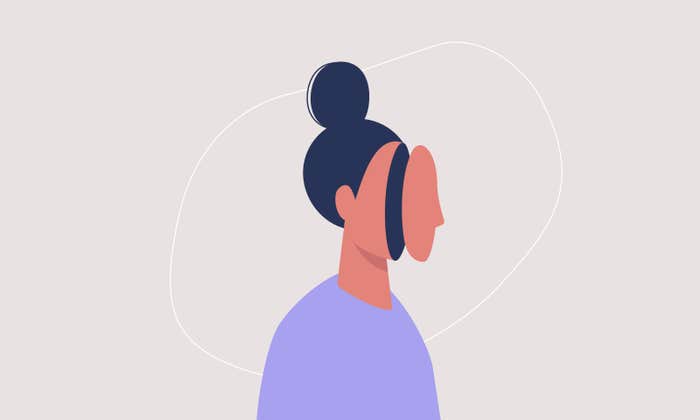We are all storytellers; we make sense out of the world by telling stories. And science is a great source of stories. Not so, you might argue. Science is an objective collection and interpretation of data. I completely agree. At the level of the study of purely physical phenomena, science is the only reliable method for establishing the facts of the world.
But when we use data of the physical world to explain phenomena that cannot be reduced to physical facts, or when we extend incomplete data to draw general conclusions, we are telling stories. Knowing the atomic weight of carbon and oxygen cannot tell us what life is. There are no naked facts that completely explain why animals sacrifice themselves for the good of their kin, why we fall in love, the meaning and purpose of existence, or why we kill each other.
Science is not at fault. On the contrary, science can save us from false stories. It is an irreplaceable means of understanding our world. But despite the verities of science, many of our most important questions compel us to tell stories that venture beyond the facts. For all of the sophisticated methodologies in science, we have not moved beyond the story as the primary way that we make sense of our lives.
To see where science and story meet, let’s take a look at how story is created in the brain. Let’s begin with an utterly simple example of a story, offered by E. M. Forster in his classic book on writing, Aspects of the Novel: “The king died and then the queen died.” It is nearly impossible to read this juxtaposition of events without wondering why the queen died. Even with a minimum of description, the construction of the sentence makes us guess at a pattern. Why would the author mention both events in the same sentence if he didn’t mean to imply a causal relationship?
Once a relationship has been suggested, we feel obliged to come up with an explanation. This makes us turn to what we know, to our storehouse of facts. It is general knowledge that a spouse can die of grief. Did the queen then die of heartbreak? This possibility draws on the science of human behavior, which competes with other, more traditional narratives. A high school student who has been studying Hamlet, for instance, might read the story as a microsynopsis of the play.
Despite the verities of science, we are compelled to tell stories that venture beyond the facts.
The pleasurable feeling that our explanation is the right one—ranging from a modest sense of familiarity to the powerful and sublime “a-ha!”—is meted out by the same reward system in the brain integral to drug, alcohol, and gambling addictions. The reward system extends from the limbic area of the brain, vital to the expression of emotion, to the prefrontal cortex, critical to executive thought. Though still imperfectly understood, it is generally thought that the reward system plays a central role in the promotion and reinforcement of learning. Key to the system, and found primarily within its brain cells, is dopamine, a neurotransmitter that carries and modulates signals among brain cells. Studies consistently show that feeling rewarded is accompanied by a rise in dopamine levels.
This reward system was first noted in the 1950s by two McGill University researchers, James Olds and Peter Milner. Stimulating electrodes were placed in presumed brain reward areas of rats. When allowed full unrestricted access to a lever that, when depressed, would cause the electrodes to fire, the rats quickly learned to repeatedly depress the lever, often to the exclusion of food and water. Realizing that our brains are capable of producing feelings so intense that we choose to ignore such basic drives as hunger and thirst was a first step toward understanding the enormous power of the brain’s reward circuitry.
Critical to understanding how stories spark the brain’s reward system is the theory known as pattern recognition—the brain’s way of piecing together a number of separate components of an image into a coherent picture. The first time you see a lion, for instance, you have to figure out what you’re seeing. At least 30 separate areas of the brain’s visual cortex pitch in, each processing an aspect of the overall image—from the detection of motion and edges, to the register of color and facial features. Collectively they form an overall image of a lion.
Each subsequent exposure to a lion enhances your neural circuitry; the connections among processing regions become more robust and efficient. (This theory, based on the research of Canadian psychologist Donald O. Hebb, a pioneer in studying how people learn, is often stated as “cells that fire together wire together.”) Soon, less input is necessary to recognize the lion. A fleeting glimpse of a partial picture is sufficient for recognition, which occurs via positive feedback from your reward system. Yes, you are assured by your brain, that is a lion.
An efficient pattern recognition of a lion makes perfect evolutionary sense. If you see a large feline shape moving in some nearby brush, it is unwise to wait until you see the yellows of the lion’s eyes before starting to run up the nearest tree. You need a brain that quickly detects entire shapes from fragments of the total picture and provides you with a powerful sense of the accuracy of this recognition.
One need only think of the recognition of a new pattern that is so profound that it triggers an involuntary “a-ha!” to understand the degree of pleasure that can be associated with learning. It’s no wonder that once a particular pattern-recognition-reward relationship is well grooved into our circuitry, it is hard to shake. In general—outside of addiction, that is—this “stickiness” of a correlation is a good thing. It is through repetition and the sense of familiarity and “rightness” of a correlation that we learn to navigate our way in the world.
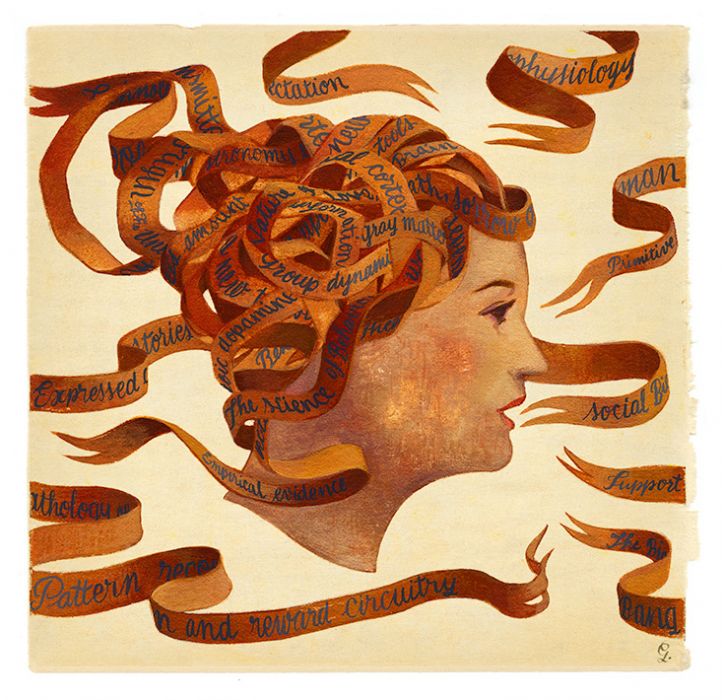
Science is in the business of making up stories called hypotheses and testing them, then trying its best to make up better ones. Thought-experiments can be compared to storytelling exercises using well-known characters. What would Sherlock Holmes do if he found a body suspended in a tree with a note strapped to its ankle? What would a light ray being bounced between two mirrors look like to an observer sitting on a train? Once done with their story, scientists go to the lab to test it; writers call editors to see if they will buy it.
People and science are like bread and butter. We are hardwired to need stories; science has storytelling buried deep in its nature. But there is also a problem. We can get our dopamine reward, and walk away with a story in hand, before science has finished testing it. This problem is exacerbated by the fact that the brain, hungry for its pattern-matching dopamine reward, overlooks contradictory or conflicting information whenever possible. A fundamental prerequisite for pattern recognition is the ability to quickly distinguish between similar but not identical inputs. Not being able to pigeonhole an event or idea makes it much more difficult for the brain to label and store it as a discrete memory. Neat and tidy promotes learning; loose ends lead to the “yes, but” of indecision and inability to draw a precise conclusion.
When we make and take incomplete stories from science, there are moral consequences.
Just as proper pattern recognition results in the reward of an increased release of dopamine, faulty pattern recognition is associated with decreased dopamine release. In monkeys, the failure to make a successful prediction (correlation between expected and actual outcome) characteristically diminishes dopamine release exactly at the time that the predicted event is anticipated but fails to occur. Just as accurate correlations are pleasurable, lack of correlation produces the neurotransmitter equivalent of thwarted expectation (or worse).
Once we see that stories are the narrative equivalent of correlation, it is easy to understand why our brains seek out stories (patterns) whenever and wherever possible. You may have read or heard about the famous experiment in which University of Illinois psychology professor Daniel Simons asked subjects to watch a video and count the number of times a ball is dribbled by a basketball team. When focused on counting, the majority of viewers failed to see a woman in a gorilla suit walk across the playing area. In effect, well-oiled patterns of observation encourage our brains to compose a story that we expect to hear.
Because we are compelled to make stories, we are often compelled to take incomplete stories and run with them. With a half-story from science in our minds, we earn a dopamine “reward” every time it helps us understand something in our world—even if that explanation is incomplete or wrong.
Following the Newtown massacre, some experts commented on the killer having Asperger’s syndrome, as though that might at least partially explain his behavior. Though Asperger’s syndrome feels like a specific diagnosis, it is, by definition, nothing more than a constellation of symptoms common to a group of people. In the 1940s, Austrian pediatrician Hans Asperger noted that a number of patients had similar problems with social skills, eccentric or repetitive actions, unusual preoccupation rituals, and communication difficulties, including lack of eye contact and trouble understanding facial expressions and gestures. The 2013 decision by the American Psychiatric Association to remove the diagnosis of Asperger’s syndrome from its guidebook for clinicians, the Diagnostic and Statistical Manual of Psychiatric Disorders (DSM-V), for failing to conform to any specific neuropathology, underscores the all-too-common problem of accepting a clustering of symptoms as synonymous with a specific disease. Syndromes are stories in search of underlying causes.
Similarly, studies of psychopaths have shown a diminished volume of gray matter in specific regions of the prefrontal cortex. But these findings aren’t the sole explanation for violent acts. Because it is impossible to stimulate a specific brain region to produce complex and premeditated acts, we are left to conclude that while certain brain conditions can be correlated with a complex act, they are not necessarily causing it. Likewise, brain scans that reveal abnormalities in mass murderers may help us understand what might have contributed to their behavior. But the abnormalities are no more the sole explanation for violence than childhood neglect or poor nutrition are. They are stories, albeit with a detailed neurophysiological component, but stories nonetheless.
When we make and take incomplete stories from science, there are often moral consequences. How much personal responsibility should we assign to an individual with a damaged or malfunctioning brain? What is the appropriate punishment and possibility of rehabilitation for such a person? Only when we openly acknowledge the degree to which science is presenting its observations in the form of story can we address this moral dimension. We must each work out our own guidelines for when we think scientific data has exceeded its bounds and has morphed into the agenda and bias of story. Of course this is always going to be a challenge in the absence of a full array of scientific data.
But we can begin by being aware of the various ways that storytelling can insinuate itself into the presentation and interpretation of data. Good science is a combination of meticulously obtained and analyzed data, a restriction of the conclusions to those interpretations that are explicitly reflected in the data, and an honest and humble recognition of the limits of what this data can say about the world.
Loose ends lead to the “yes, but” of indecision and inability to draw a precise conclusion.
As members of the public, we need to ensure that any science we accept as truth has passed through the peer-review process. We should also understand that even peer-reviewed data is not always accurate. In 2011, Nature reported that published retractions had increased by a factor of 10 over the last 10 years, while the number of papers published rose only 44 percent. Also in Nature, scientists C. Glenn Begley and Lee M. Ellis wrote that their colleagues at the biotechnology firm Amgen could reproduce only six of 53 landmark hematology and oncology studies from the scientific literature. Similarly, scientists from Bayer reported in 2011 that they could not consistently reproduce about two-thirds of oncology studies relevant to their work.
When reading science reports, we should also search for information on the limits of the data. Were assumptions made? What do the “error bars,” or graphic representations of variable data, say? We may not always understand the data limits, but we should be worried when some discussion of them is completely absent.
In the end, scientists have the tools, language, and experience to tell us informed, engaging, and powerful stories. In turn, we should judge their studies in the same light in which we judge other artistic forms. Like a literary critic, we should assess the preciseness of language, the tightness of structure, the clarity and originality of vision, the overall elegance and grace of the study, the restraint with which they present moral issues, how they place their studies in historical, cultural, and personal context, and their willingness to entertain alternative opinions and interpretations.
The methodology of science remains one of the great advances of humankind. Its stories, properly told, are epic poems in progress, and deserve to stand alongside the great stories of history.
Robert A. Burton, M.D., a neurologist and novelist, is the author of On Being Certain: Believing That You Are Right Even When You’re Not, and A Skeptic’s Guide to the Mind: What Neuroscience Can and Cannot Tell Us About Ourselves.
A slightly different version of this story appeared in our preview issue, “The Story of Nautilus” in April, 2013.



















